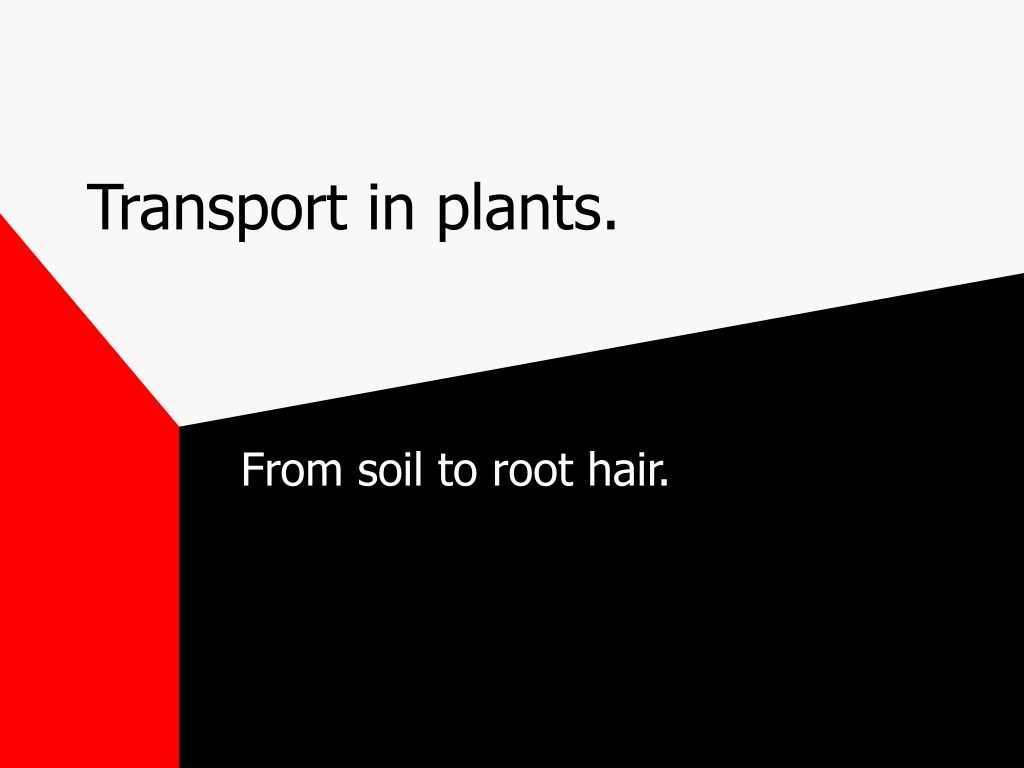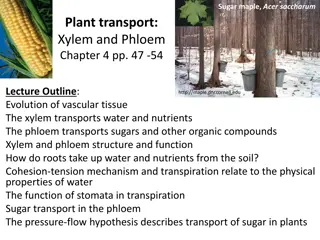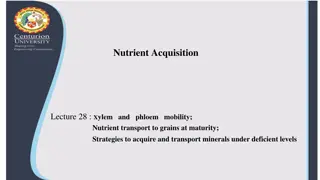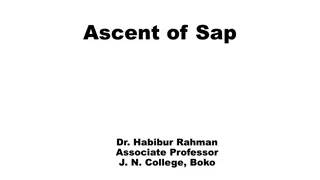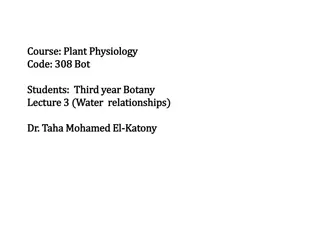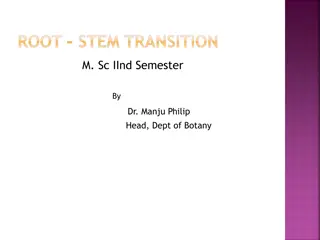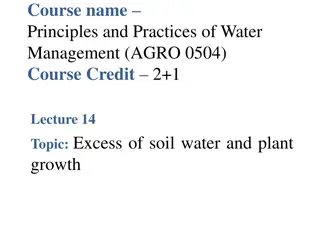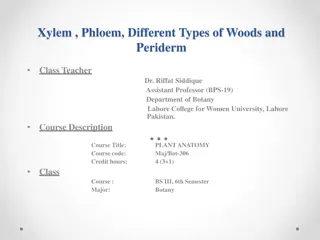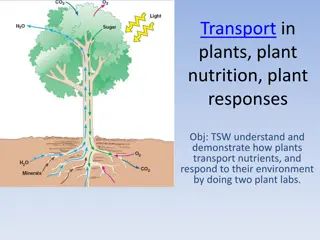Understanding Water Transport in Plants: From Soil to Xylem
Explore the fascinating journey of water in plants, starting from absorption by root hairs in the soil to its transportation through the root structure, including the cortex pathways, and into the xylem tissue for support and further distribution. Discover the essential role of xylem vessels and tracheids in facilitating this vital process.
Download Presentation

Please find below an Image/Link to download the presentation.
The content on the website is provided AS IS for your information and personal use only. It may not be sold, licensed, or shared on other websites without obtaining consent from the author. Download presentation by click this link. If you encounter any issues during the download, it is possible that the publisher has removed the file from their server.
E N D
Presentation Transcript
Transport in plants. From soil to root hair.
Soil to root hair. Root tip is covered in a tough non- permeable layer. Behind the tip is a group of cells called the EPIDERMIS, which extends into root hairs. The root hairs reach into the spaces between soil particles and absorb water.
More soil to root. Water is absorbed down a water potential gradient because soil has a high water potential. The cell sap has a low water potential due to dissolved inorganic ions, sugars and proteins. Water, therefore, diffuses down the water potential gradient through the partially permeable membrane into the vacuole.
a bit more soil and roots. Lots of root hairs increase the surface area, which increases the rate of absorption. Root hairs also absorb mineral ions. Some trees and plants have fungi and are known as mycorrhizas. The mycorrhizas absorb nutrients from the soil and some trees cannot survive without them.
From root hair to xylem. Water crosses the cortex and enters the xylem in the centre of the root. This happens because of a water potential difference between the xylem and root hairs. The water can take two paths through the cortex.
Getting through the cortex. There are two pathways. The apoplast and the symplast pathways.
Activivty Using the information on page 131, make sure you have the route taken by water through the two pathways. Include any diagrams.
Xylem tissue. Xylem tissue is involved in support and transport. Xylem contains several types of cells (except in conifers). Vessel elements and tracheids. Fibres. Parenchyma cells.
Vessel elements and tracheids Xylem vessels are made from elongated vessel elemnets. Vessel elements are involved in the transport of water and have lignin in their walls. Lignin is very hard and impermeable to water.
Vessel elements and trahceids The lignin builds up around the outside of the cell and the contents die. The middle of the cell is now empty and known as the lumen. The lignin becomes pitted, leaving holes in its exterior. The pits are covered by permeable, thickened cellulose.
This powerpoint was kindly donated to www.worldofteaching.com http://www.worldofteaching.com is home to over a thousand powerpoints submitted by teachers. This is a completely free site and requires no registration. Please visit and I hope it will help in your teaching.
